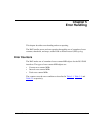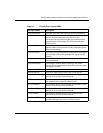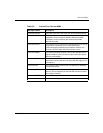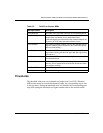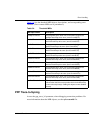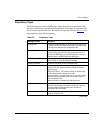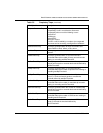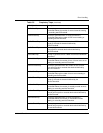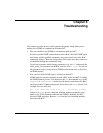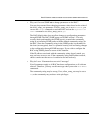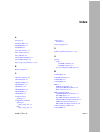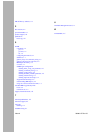
Error Handling
300861-C Rev. 00 5-7
Proprietary Traps
The RAC generates various SNMP traps. Some alarm traps are generated when
the error counters have reached the error threshold. Clear traps are generated after
the associated trap has been sent. By default, all traps are disabled. Table 5-5 lists
the proprietary traps and descriptions.
Table 5-5. Proprietary Traps
MIB Object Name Description
callBeginTrap This trap is generated when an incoming call is detected or
an outbound call is generated by the RAC. This trap is sent
to the trap host defined in the configuration file.
callEndTrap This trap is generated when a call is terminated. The trap is
sent to the trap host defined in the configuration file. The
trap includes MIB objects as variable bindings. The trap is
controlled by the callENDTrapThresh MIB object.
ds0ErrorThresholdTrap This trap is generated when the number of consecutive
failures meets or exceeds ds0ErrorThreshold.
dvsConnectFailure This trap is sent when a DVS connection fails.
forcedCallDisconnectTrap This trap is generated when a call is disconnected due to
inactivity. The RAC has the following activity timers that
trigger this trap:
cliInactivityTimeout
- The amount of time (in minutes) that
the RAC waits before hanging up the call.
inactivityTimeout
- The amount of time (in minutes) that the
RAC waits before terminating the call. Uses the value of
gpTimerInactivityTimer.
netActivityTimeout
- Similar to the activity timeout.
modemErrorTrap This trap is sent to the trap host(s) when a modem failure is
detected automatically, the modem is busied out due to a
percentage failure threshold over a time period or a
consecutive failure threshold.
modemUnavailableTrap This trap is generated when no modems are available to
handle an incoming call.
(continued)





